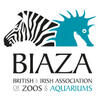Kathleen Graham, General manager of Curraghs Wildlife Park on the Isle of Man, reflects on how the Covid-19 pandemic affected the Wildlife Park on the “small island” of the Isle of Man
Being on a small island when the pandemic hit we could feel the tsunami wave coming and it felt paralysing. How would we cope? What did the future hold? As the UK locked down, the Isle of Man government closed our borders on the 27th of March 2020, but COVID had already hit our shores. As the Curraghs Wildlife Park went into lockdown, the loss of an Easter season was a moment of grief that washed away as we focused on how to keep staff safe, to keep the animals safe and how we would keep the community safe.
I had viewed being the only zoo in BIAZA owned by a national government on a small island as challenges to overcome, but I now saw the sea as a protective moat, and our status was now a big stable life raft. Where once I was in awe of what big budget zoos could do, now I was relieved that we didn’t have the liabilities that come along with that big operating budget. While we were filled with gratitude for our circumstance we felt real fear for other members. How would we keep breeding programs and conservation projects afloat if the ‘big ships’ went down?
By the end of May 2020 we were out of lockdown and open, all restrictions gone by mid June 2020 it was life as normal on the Isle of Man. Covid free was the strategy adopted by the IoM government.
This experience of our island life opened my eyes to a circular and local economy; leisure businesses, local shops and restaurants all flourished, supplies and services still circulated on and off island, just not the people. Extraordinarily the Park saw higher visitor numbers every month and memberships doubled. A voluntary donation (opt out since 2020 rather than opt in) meant we went from about 1-2% income going to ‘in-situ’ conservation to about 10% of our income.
Many zoo directors and employees have had to flip their thinking to prevent capsizing. Having a new perspective can help us spot the opportunities as the tide recedes.
My eyes have been opened to the powerful role small, local zoos can play. A quality conversation one to one with a visitor can have a bigger impact than a multi-million-pound exhibit, we can provide opportunities to volunteers and youngsters, we support the community and the community supports us. We can encourage people to travel less, reducing our carbon footprint too. With a new recognition of the well-being for zoo visitors, should we expect our national governments to support zoos by grants or infrastructure funding to ensure security for all modern zoos, leaving them more scope to concentrate income generation for ‘in-situ’ conservation?
Small zoos, and even small Islands can illuminate a path like a lighthouse beacon that might help others hitting the rocks; that’s my reflection.
By Kathleen Graham,
General Manager of Curraghs Wildlife Park
All blogs reflect the views of their author and are not a reflection of BIAZA's positions.
-
News
.png?w=100&h=100&zc=1&f=jpeg&hash=f4751b5c9a087d116f97a1fe5460eee5) Seeing Clearly: Aurora the Snow Leopard’s Eye Surgery a Remarkable Success 12th December, 2025Banham Zoo is thrilled to share some wonderful news about one of their most charismatic residents. Aurora, the playful three-year-old snow leopard,…
Seeing Clearly: Aurora the Snow Leopard’s Eye Surgery a Remarkable Success 12th December, 2025Banham Zoo is thrilled to share some wonderful news about one of their most charismatic residents. Aurora, the playful three-year-old snow leopard,… -
News
.png?w=100&h=100&zc=1&f=jpeg&hash=da0be505fb7f3e4c164f335c5741d878) Colchester Zoological Society (CZS) gets green light for brand-new African lion habitat 9th December, 2025The Zoo have been working closely with architects at DEARADH ZÚ to develop the design of the new and exciting habitat. A number of professionals…
Colchester Zoological Society (CZS) gets green light for brand-new African lion habitat 9th December, 2025The Zoo have been working closely with architects at DEARADH ZÚ to develop the design of the new and exciting habitat. A number of professionals… -
News
.png?w=100&h=100&zc=1&f=jpeg&hash=92e9d1ec2ad7302b175c4a59d92f04fe) Another important birth for Folly Farm with arrival of second Critically Endangered Eastern Black Rhino calf 9th December, 2025Folly Farm in Pembrokeshire is celebrating the birth of another Critically Endangered eastern black rhino calf – and it’s a boy! This is the…
Another important birth for Folly Farm with arrival of second Critically Endangered Eastern Black Rhino calf 9th December, 2025Folly Farm in Pembrokeshire is celebrating the birth of another Critically Endangered eastern black rhino calf – and it’s a boy! This is the…



